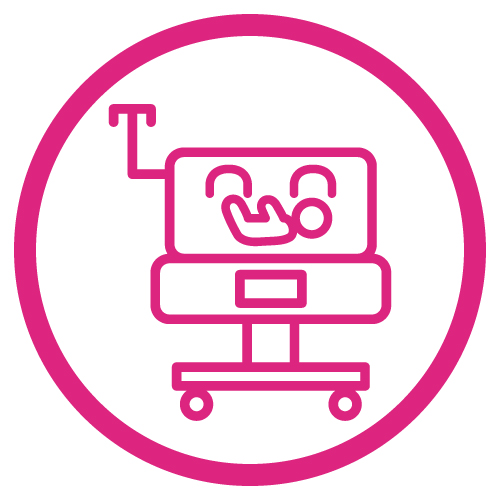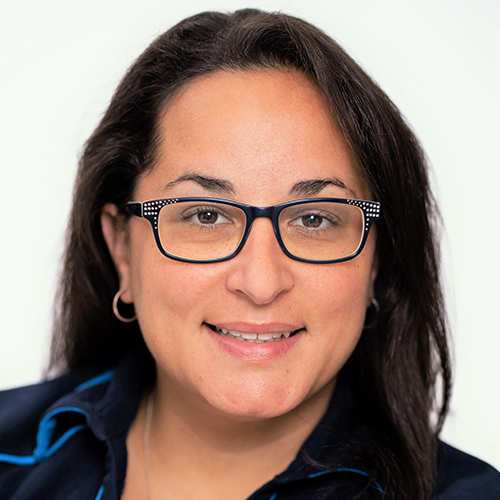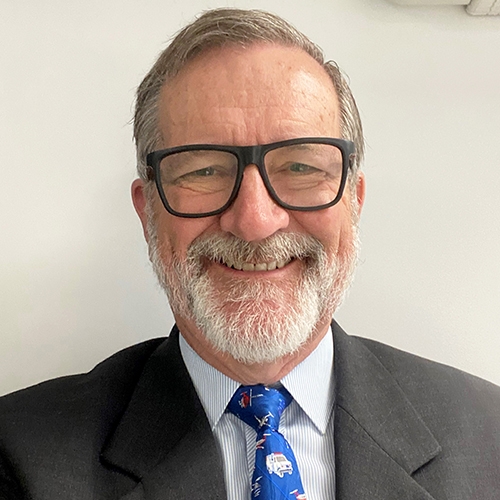
Safe Travels: Best Practice for Neonatal Transport Lecture Pack
Safe and effective transportation of neonates to and from the NICU, whether it's within hospital or between hospitals, is an important aspect of care for NICU babies. As research grows and technology evolves, it's important to stay up to date. This package provides a special focus on neonatal transport and the skills and procedures needed to ensure the best possible outcomes. Join us to learn more about the evolution of neonatal transport, how you can improve the quality of your transport processes, learn more about the clinical skills involved and work through case studies to help consolidate your learning.
This lecture package was originally offered as part of the GOLD Neonatal Online Conference 2021.


Bridget Liriano is a registered nurse with over 15 years of experience in pediatrics and holds a Master of Nursing degree from the University of Toronto in Ontario, Canada. As the Quality Leader and a Transport Clinician for the Acute Care Transport Service (ACTS) Team at Sick Kids, Bridget is committed to providing expert medical care in the stabilization and safe transport of acutely ill neonates and children. She is a strong advocate for quality and safety, which is demonstrated through her involvement in clinical research, team-based projects and quality improvement initiatives. She has formerly covered the role of Interprofessional Education Specialist, working in collaboration with the leadership team to support the educational needs of her ACTS colleagues. Bridget has a passion for clinical education and simulation-based training, with a focus on interprofessional collaboration, peer mentorship, clinical debrief and neonatal resuscitation.
1. Identify how early recognition of instability and early consultation can make a difference in patient outcomes.
2. Describe evidence based practices of clinical cases moving beyond the A,B,C’s of airway management, respiratory support and cardiovascular instability.
3. Discuss how a flexible approach to patient assessment, diagnostics and history can promote effective problem solving and clinical management strategies.
This session will highlight important aspects of resuscitation and stabilization of the neonate with an evidence based approach to clinical practice. Through case based examples, the audience will explore how effective communication, interprofessional collaboration and reference to clinical care pathways can promote patient safety and quality of care for the most vulnerable neonatal patients. Learners will gain a better understanding of the triage process and the preparation of patients for acute care transport. The session will conclude with a review of the ‘lessons learned’ from transport case presentations and their outcomes.


Dr. Caraciolo Fernandes is an academic neonatologist whose clinical experience and training spans three different countries/continents and over three decades. He received his medical degree from Grant Medical College in India, and did Fellowships at King Edward Memorial Hospital, Australia and Baylor College of Medicine, USA before joining the faculty at the Texas Children's Hospital and Baylor in 1998. He recently acquired a Master of Business Administration from the University of Tennessee in 2018.
A clinician-educator and practicing neonatologist, he is actively involved in teaching Baylor College of Medicine medical students, pediatric residents and neonatology fellows. At Texas Children's Hospital, he has served as the Medical Director for Neonatal Transport since 2008, and is involved in multi-disciplinary clinical research, and quality improvement initiatives. He also is a QI Coach at Baylor College of Medicine Institute for Continuing Professional Development in Quality Improvement and Patient Safety.
Nationally, he is a past member of Executive Committee of the Section of Transport Medicine of the American Academy of Pediatrics, and an editor of the inaugural edition of the Field Guide for Air and Ground Transport of Neonatal and Pediatric Patients that was introduced at the AAP National conference in Orlando, FL in November 2018. He is a senior editor of "Guidelines for the Acute Care of the Neonate," currently in its 28th annual revision, a handbook that has served as a resource for health-caregivers at Baylor-affiliated institutions for over two decades, and, currently via free online download, for practitioners in over 50 countries.
1. List the Principles of Quality Improvement (QI).
2. Describe how to prioritize QI projects related to Neonatal Transport.
3. Describe how to launch their own Transport-related QI project.
Premature and sick babies are often born in locations ill-equipped to care for them. They are then transported to higher levels of care for sophisticated diagnostic tests and specialized care. However, while such transport is necessary, it is not without risk. Since critically-ill infants can deteriorate clinically during transport, ideally only specialized teams should transport sick infants. Unfortunately, this is not pragmatically possible nor is the standard of care. With regionalization of care, more infants are transferred to tertiary-care centers for specialized care than ever before and not all centers have specialized transport teams to transport infants. Despite best efforts, not all transports will go well, and often processes and outcomes may leave much to be desired. Hence, it is vital for hospital administrators and clinicians to learn quality improvement (QI) methodology, monitor relevant metrics, and implement QI initiatives to order to improve outcomes. Fortunately, developing a QI mindset and applying it to neonatal transport can easily be done with practice. Learning how to prioritize QI initiatives, assemble QI teams, lead healthcare change, sustain improvements, and develop a culture that strives to improve are all desirable and can yield significant tangible benefits for clinicians and their patients.


Dr. Andrew Berry, AM MB BS FRACP, is a Neonatal and Paediatric Retrieval Specialist. He has vast experience in neonatal and paediatric critical care transport since 1977. This includes being the head of Neonatal Intensive Care, and Director of Newborn Transport Service, both at Royal Alexandra Hospital for Children in Sydney, Australia.He is currently State Director at NETS, the Newborn and Paediatric Emergency Transport Service of New South Wales, Australia.
Dr. Berry is a fixed wing and rotary wing pilot. In 1989 he co-founded Child Flight Inc., and dedicated helicopter service for children.
His expertise is regularly sought on how to develop and operate emergency transport services and associated advisory programs for perinatal, neonatal and paediatric acute care in Australia, Brunei, New Zealand, Malaysia, Hong Kong, Canada, England, Scotland, Singapore, and the USA.
1. Describe key aspects of aviation physiology.
2. List several risks to an individual baby when being moved by air.
3. Describe how to communicate the clinical need to the pilot.
Air transport is commonly required for acute patient transport; including of sick newborns. Regionalization of tertiary neonatal care often means longer transport distances for patients between local referring hospitals and places of definitive care. The physiology of the newborn and some unique features of disease processes in the newborn present some challenges in safe transport by air. Fixed wing and rotary wing transport modes expose the sick newborn to different stressors according to their own unique variable cabin environments and altitude. An understanding of how newborns react to air transport and how to modify the air transport environment can both contribute to safer, more effective transport of the newborn.


Dr Nandiran Ratnavel has been a Consultant Neonatologist at The Royal London Hospital, Barts Health NHS Trust for 16 years. He is Director of The London Neonatal Transfer Service and Joint Clinical Lead for North East and Central London Neonatal Services. He serves as joint implementation lead for In Utero Transfer Services in London and has recently taken up a position as Neonatal Clinical Lead for the London Maternity and Neonatal Safety Improvement Programme. Finally he has a role as clinical reviewer for the Independent Maternity Services Oversight Panel for the Welsh Government.
1. Recognise areas of risk associated with neonatal transport.
2. Understand the approach to mitigating risks associated with neonatal transport.
3. Describe how to promote a safety culture in your transport team.
Retrieval medicine is associated with certain hazards. These can affect the patient or staff. Avoidable adverse events often arise as a consequence of suboptimal communication, drug error, inadequate preparation or equipment failure. Applying the principles of risk management and clinical safety is essential. To understand issues associated with neonatal transport one needs to look at the infrastructure of transfer teams, arrangements for governance, risk identification, incident reporting, feedback and learning from experience. One also needs to look at audit processes, training, communication and ways of team working. Adherence to current recommendations for equipment and vehicle design are also vital. Benchmarking between services and sharing best practice with a view to optimising safety and reducing risk is recommended.
Accreditation
CERPs - Continuing Education Recognition Points
GOLD Learning is designated as a Long Term Provider of CERPs by the International Board of Lactation Consultant Examiners (IBLCE) -- Approval #CLT114-07.
4 R-CERPs Approved.
If you have already participated in this program, you are not eligible to receive additional credits for viewing it again. Please send us an email to [email protected] if you have any questions.
Additional Details
Viewing Time: 4 Weeks
Tags / Categories
(IBCLC) Infant, (IBCLC) Infant, (IBCLC) Techniques, Neonatal Transport
How much time do I have to view the presentations?
- The viewing time will be specified for each product. When you purchase multiple items in your cart, the viewing time becomes CUMULATIVE. Ex. Lecture 1= 2 weeks and Lecture Pack 2 = 4 Weeks, you will have a total of 6 weeks viewing time for ALL the presentations made in that purchase.
- Time for viewing the talks begins once you purchase the product. For Live Webinars & Symposiums, the viewing period begins from when the live event takes place. Presentations can be accessed 24/7 and can be viewed as many times as you like during the viewing period.
What are bundled lectures?
- Presentations may be available individually or via a bundled package. Bundled lectures are a set of lectures that have been put together based on a specific category or topic. Some lectures will be available in both individual and lecture form, whereas others will be available only via a bundled lecture pack.
Will there be Handouts?
- YES! Each lecture comes with a PDF handout provided by the Speaker.
Some lectures include a Q&A, what does that mean?
- During our online conferences, presentations that occur live are also followed by a short 15 minute Question & Answer Session. The Speaker addresses questions that were posted by Delegates during the presentation. We include the recording of these Q&A Sessions as a bonus for you.
How can I receive a Certificate?
- If this presentation offers a certificate, once you are done viewing the lecture or the lectures within a bundle, submit your attendance record in order to be able to download your certificate. You'll be able to see which credits are offered for the lecture by hovering over the "Credits Available" link within the "Speakers & Topics" tab.
Professionals that selected this package also viewed

|
|

|










